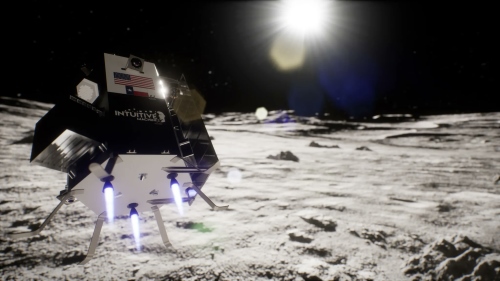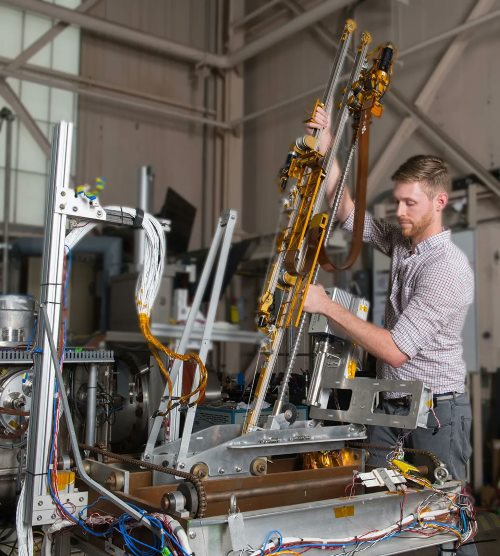Mission Details
| Parameter | Details |
| Launch Date | February 26, 2025 (Tentative) |
| Lander | Athena (Intuitive Machines) |
| Landing Site | Mons Mouton (Near the Moon’s South Pole) |
| Delivery Initiative | NASA’s Commercial Lunar Payload Services (CLPS) |
Launching no earlier than Feb. 26, @Int_Machines' lunar lander Athena is heading to the Moon! What innovative technology demonstrations are onboard?
— NASA Technology (@NASA_Technology) February 7, 2025
Find out during our media telecon today at 1 p.m. EST: https://t.co/1gp7m0Iw6u pic.twitter.com/tuBxg7UP81
NASA’s Polar Resources Ice Mining Experiment-1 (PRIME-1) is set to explore the Moon's subsurface to identify potential lunar resources. The mission will provide critical insights to support the Artemis program and future lunar exploration. The technology developed through PRIME-1 is expected to facilitate long-term human habitation and resource utilization on the Moon.
Also Read| What Is NASA's Pandora Mission? All You Need To Know
What are NASA's PRIME-1 Objectives?
The PRIME-1 experiment aims to:
- Demonstrate lunar drilling and sample collection capabilities.
- Analyze gas compositions in the Moon's subsurface.
- Provide essential data for lunar resource utilization.
- Support future Artemis missions by identifying stable resources on the Moon.

Source: NASA's Technology
Also Read| What is Einstein's Ring and its Significance?
Significance of PRIME-1
According to Jackie Quinn, PRIME-1 project manager at NASA’s Kennedy Space Center, “The ability to drill and analyze samples simultaneously allows us to gather insights that will shape the future of lunar resource utilization.” With sustainable exploration in mind, PRIME-1's findings will assist in the development of life-sustaining supplies needed for long-term Moon missions.
Which Technology and Instruments Used in NASA's PRIME-1 Mission?
Two primary instruments onboard the PRIME-1 mission will assess lunar soil and extract critical data to enhance our understanding of the Moon's environment:
- Regolith and Ice Drill for Exploring New Terrains (TRIDENT): Drills into the Moon's surface to collect samples.
- Mass Spectrometer Observing Lunar Operations (MSOLO): Analyzes the collected samples for gas composition across different depths.
These technologies will provide valuable insights into resource extraction, paving the way for future human missions. Let’s see these technologies in detail:

Source: NASA's Technology
TRIDENT Drill
Developed by Honeybee Robotics (A Blue Origin Company). Drills up to 3.3 feet (1 meter) deep into lunar regolith. Collects samples of 4 inches (10 cm) each. Equipped with carbide cutting teeth to penetrate tough lunar materials. Provides data on subsurface temperature and mechanical properties.
MSOLO Mass Spectrometer
Developed by INFICON and modified for spaceflight at Kennedy Space Center. Detects gases such as water vapor and other volatiles released from drilled samples. Helps determine lunar resource potential for future missions.
Also Read: Astronomers Discover Quipu, the Universe's Largest Structure: Know Significance
Implications for Future Moon Missions
The data collected will guide sustainable lunar resource extraction. Understanding trapped gases and regolith composition helps in predicting resource availability. Insights from PRIME-1 will support habitat development and future Moon colonies.
NASA’s CLPS Initiative
PRIME-1 is part of NASA’s Commercial Lunar Payload Services (CLPS), an initiative promoting commercial partnerships for lunar deliveries. Under CLPS, NASA serves as a primary but not sole customer, fostering a commercial lunar industry.

Source: NASA's Technology
Funding and Support
The mission is funded by NASA’s Space Technology Mission Directorate under the Game Changing Development Program. By investing in cutting-edge technologies, NASA aims to ensure long-term exploration capabilities beyond Earth.
Conclusion
The PRIME-1 mission represents a critical step towards lunar resource utilization, enhancing the feasibility of sustainable human presence on the Moon. By leveraging commercial partnerships and pioneering technology, NASA is shaping the future of space exploration, bringing us closer to deep-space colonization.
Also Read| What is NASA's PUNCH Mission? Know Key Details & Objectives
Also Read| Asteroid 2024 YR4 on NASA's Radar: What Are Near Earth Objects (NEOs)?
Comments
All Comments (0)
Join the conversation